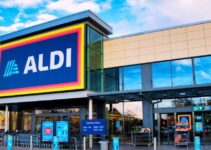The Walt Disney Company is an entertainment and mass media conglomerate multinational company. Roy O. Disney and Walt Disney founded the Walt Disney Company in 1923. Today, we’ll discuss the value chain analysis of Disney Plus supply chain analysis; the primary and supporting activities in the process of value chain analysis Example Company. They are inbound and outbound logistics, operations, marketing, and customer service; infrastructure, HRM, technology, and procurement as an application of the value chain analysis process.
Substitutes of Disney
- Sony
- CBS
- Netflix
- Time Warner Cable
- Viacom
- Comcast
The Value chain analysis of Disney Plus supply chain analysis would analyze the primary and supporting activities in the process of value chain analysis. They’re inbound and outbound logistics, operations, marketing, and services; infrastructure, HRM, technology, and procurement. Here’s the supply chain analysis of Disney value chain analysis company example as follows;
Value Chain Analysis of Disney
Let’s discuss the primary and supporting activities involved in the process of value chain analysis of Disney supply chain analysis. It is an application of value chain analysis based on Porter’s model; some of the key elements and components of value chain analysis are as follows;
Primary Activities of Disney
Some of the five main primary activities in the value chain analysis of Disney Plus supply chain analysis are as follows;
Inbound Logistics of Disney
I-Diverse & Large Suppliers Network
Disney deals with thousands of suppliers in various categories ranging from offices, theater production, streaming, TV, films, vacation and cruise, product material, supplies, resorts, and theme parks. In fact, the company has a very large and diverse network comprising over 44000 production and manufacturing facilities in more than 100 countries across the world.
II-Supply Chain Investment Program
The SCIP (supply chain investment program) offers significant capital funds to social organizations, NGOs, and other qualified groups. The company collaborates and supports such organizations that are dealing with child labor, gender equality, traceability, worker empowerment, forced labor, and ethical recruitment of supply chains. Some of the main SCIP partners are as follows;
- USCIB
- Social Accountability International
- Supporter Member
- MEKONG Club
- NRF
- IOE
- Better Work
- ICTI Ethical Toy program
- BSR
- APSCA
- American Apparel & Footwear Association
III-Standards & Regulations for Suppliers
In order to ensure the suppliers’ compliance with human rights standards and regulations, Disney has set up an ILS (international labor standard) program. It evaluates and monitors the suppliers and vendors that they are complying with human rights standards and regulations. The supplier code of conduct of Disney covers the following areas;
- Health and Safety
- Abuse and harassment
- Collective bargaining and freedom of association
- Discrimination
- Forced labor and child labor
- Human rights
- Worker commitment and engagement
- Working hours
- Wages and benefits
Outbound Logistics of Disney
I-DMD (Disney Media distribution)
DMD has the obligation of media and entertainment distribution of both branded and non-branded films of the company. The DMD Company has managed to distribute roundabout 300,000 of media content to over 1300 channels and broadcasters in 240 regions and countries across the globe. However, the distribution library comprises the content of the following platforms and they’re as follows;
- ESPN Films
- The Muppets Studio
- Star Studios
- Marvel Studios
- Walt Disney Pictures
- Walt Disney Animation Studios
- Pixar Animation Studios
- Disney–ABC Domestic Television
- Disney Branded Television
- Disney Channel
Operations of Disney
I-Multiple Operations
Disney engages in multiple operations in the travel, tourism, hospitality, media, and entertainment industries. The company’s operational managers need to coordinate with external influencers to reach higher productivity targets. However, the bad weather conditions decrease productivity and the sale of theme parks and resorts. Some of the main productivity metrics and KPIs of the company are as follows;
- Filming of episodes per month
- Guests’ accommodations in the hotels
- Sold tickets per day
Some of the main operations that the media company Disney engages in are as follows;
- Maintenance
- Scheduling
- Inventory
- Supply chain management
- Job designs and human resources
- Layout design and strategy
- Location
- Capacity design and process
- Quality management
- Products and services
Marketing & Sales of Disney
I-Cross Channels
Disney employs multiple media channels for the marketing and promotion of its media content; film, movies, and TV drama series. They are like TV, posters, cinema, print media, word-of-mouth marketing, and digital media channels. However, the cross-media channel strategy helps the company to approach customers in multiple ways.
II-Brand Ambassadors
Disney collaborates with various celebrities and influencers and hires them as brand ambassadors for the promotion of its films, shows, and documentaries. Since they have a huge fan following their product brand endorsement helps to amplify the customer reach and targets new segments of the market.
Services of Disney
Disney offers a wide range of services to customers businesses and companies. The service portfolio helps the company to offer personalized experiences and improve their satisfaction level. However, some of the main services that the company offers are as follows;
- Television
- Streaming
- Radio
- Publishing
- Licensing
- Broadcasting
Supporting Activities of Disney
Some of the main supporting activities in the value chain analysis of Disney Plus supply chain analysis are as follows;
Infrastructure of Disney
Disney has established a very large and strong infrastructure of studios, production units, distribution networks, suppliers and vendors network, and partner programs in the media and entertainment industry. The worldwide infrastructure helps the media brand to smoothly conduct and perform its operations.
HRM of Disney
Disney has employed over 225,000 employees to manage its global operations in the media industry. The human resource management department plays a key role in attracting and recruiting diverse talent; contract issuance and renewal, and creating a safe, creative, diverse, and innovative workplace environment.
Technological Development of Disney
Disney invests a significant amount of capital resources in technological development. In fact, the company employs the most advanced media equipment, machinery, tools, and parts available in the tech industry. The objective is to bring efficiency and creativity with the latest tools and equipment, and it helps the company develop high-quality media content to attract and retain the attention of customers.
Procurement of Disney
Disney is highly careful about ethical sourcing and procurement of raw materials and supplies. In fact, the company has set up clear regulations and standards for suppliers and vendors to engage in ethical sourcing and procurement and comply with human rights standards. The media brand doesn’t condone the exploitation of workers and modern slavery.
Conclusion: Disney Value Chain Analysis Example Company | Application of Value Chain Analysis Process
After an in-depth study of the value chain analysis of Disney; we have realized that Disney is the world’s leading media entertainment industry. If you are learning about the Disney value chain analysis example company; then you should keep in mind the abovementioned primary and supporting activities. They’re inbound and outbound logistics; operations, marketing and sales, and services; infrastructure, procurement, HRM, and technological development as an application of the value chain analysis process.
Ahsan is an accomplished researcher and has a deep insight in worldly life affairs. He goes Live 3 days a week on various social media platforms. Other than research writing, he’s a very interesting person.


